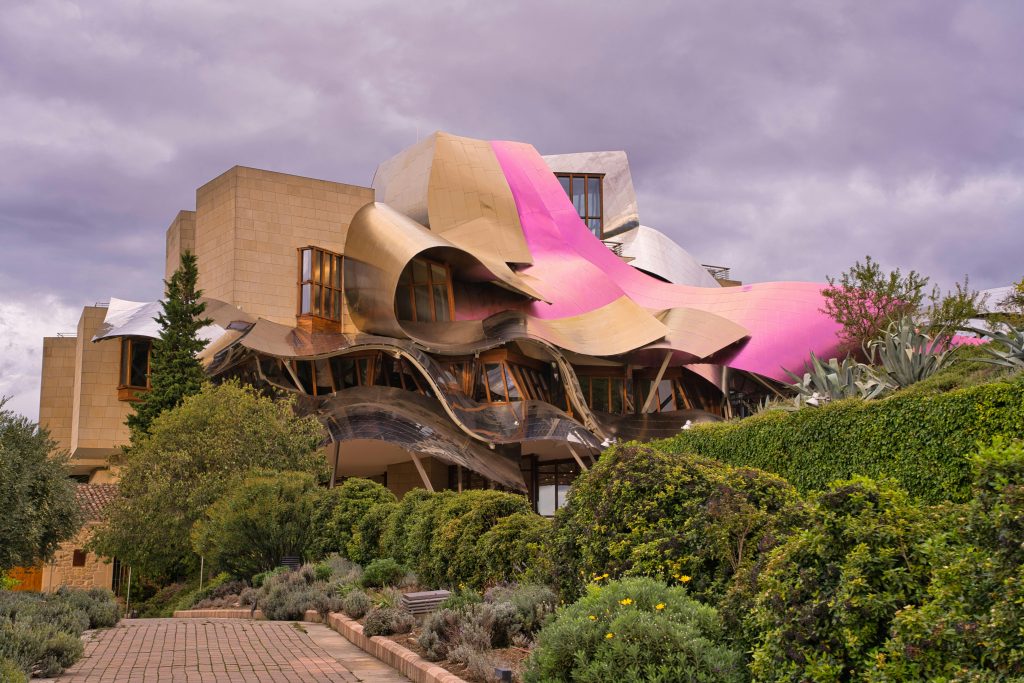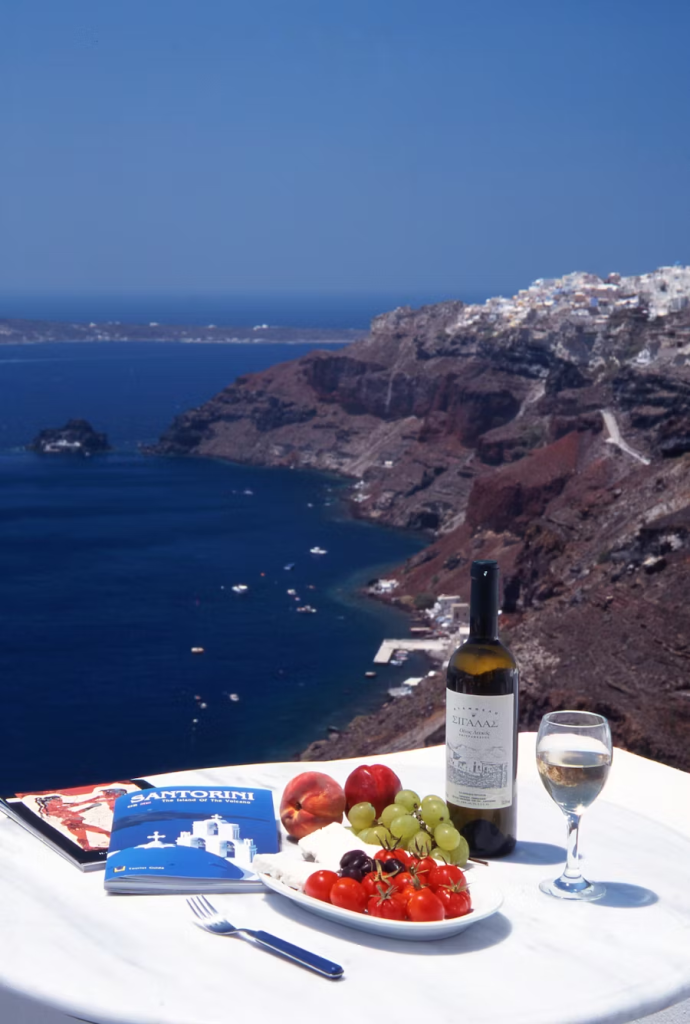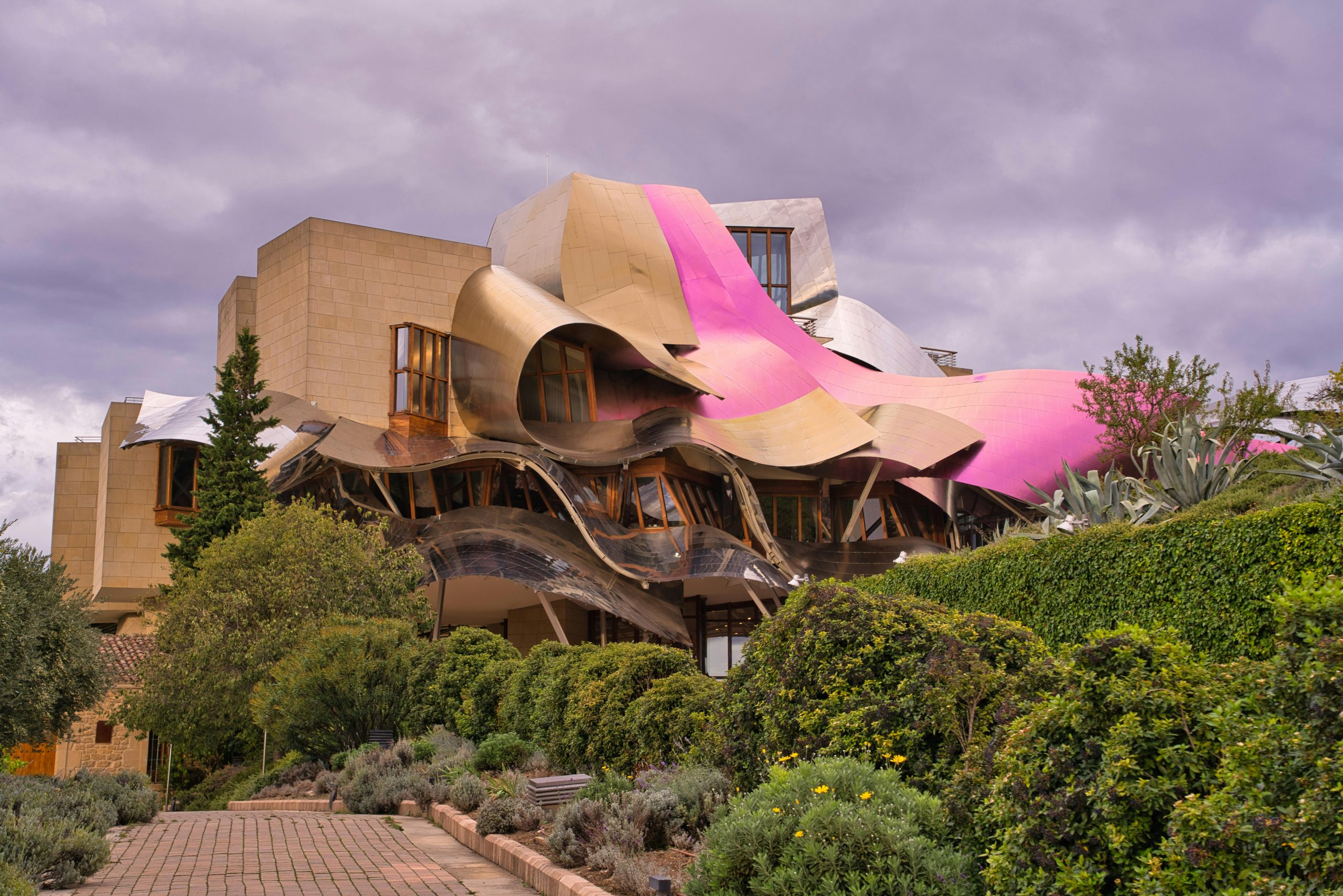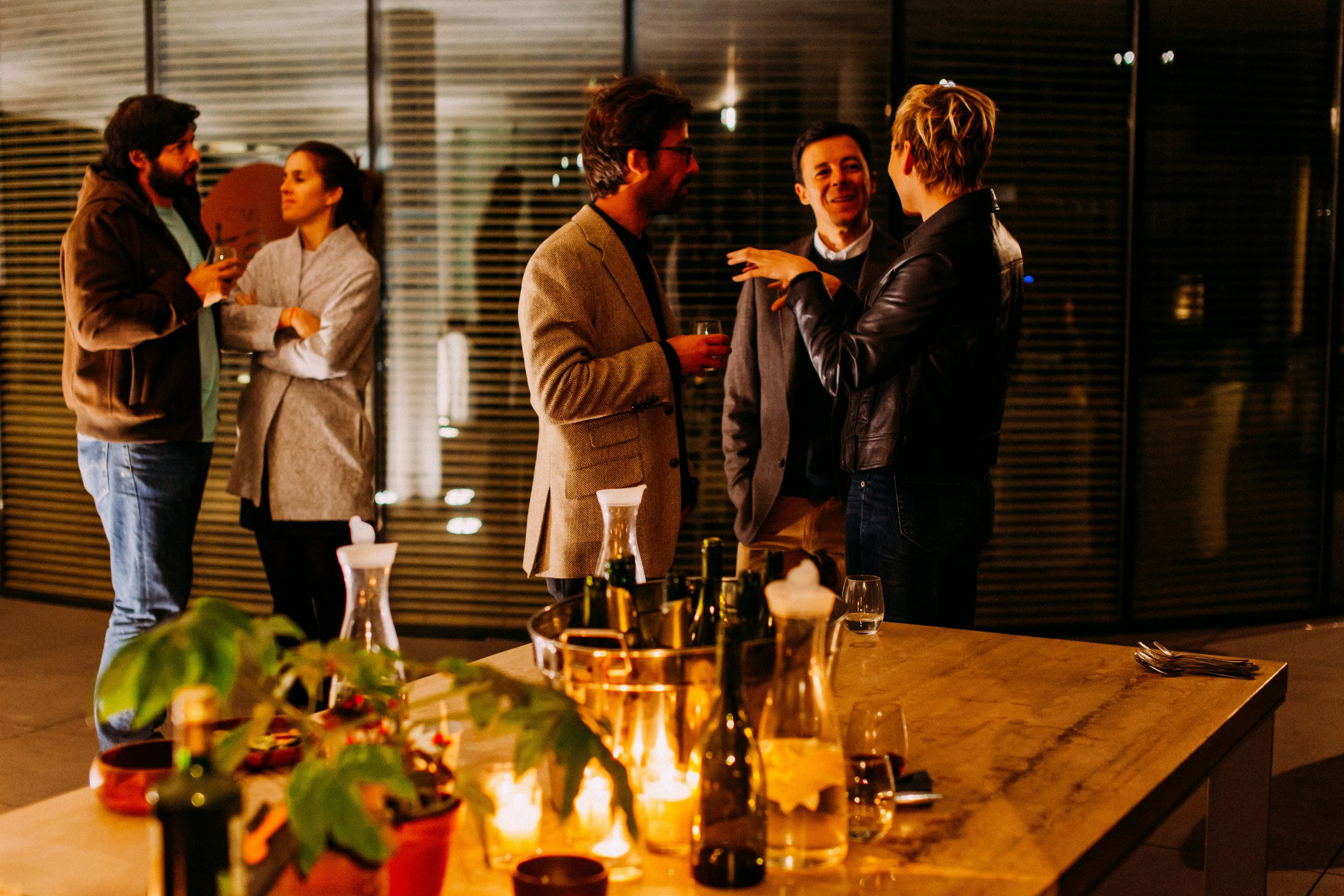Wine and architecture shouldn’t work together. One flows. The other stands. One ages in darkness. The other demands to be seen.
Yet across Europe, the world’s greatest architects have transformed wine country into open-air museums. Frank Gehry’s titanium ribbons cascade over Spanish vineyards. Santiago Calatrava’s undulating roofs mirror mountain ranges. Zaha Hadid’s sculptural forms defy gravity in medieval wine towns.
These aren’t just wineries. They’re destination experiences where you can taste a Rioja Reserve while surrounded by architectural genius.
This guide reveals Europe’s most spectacular wine and architecture destinations, places where your Instagram feed meets your wine education, and where centuries-old traditions embrace cutting-edge design.
Why Wine Country Became Architecture’s Playground
The marriage between wine and architecture started in Bilbao.
When the Guggenheim Museum opened in 1997, it transformed the industrial Basque city into a cultural powerhouse. Suddenly, architecture itself became a tourist attraction.
Nearby Rioja wineries took notice. If a building could draw millions to see modern art, why not use it to attract visitors to wine country?
The experiment worked beyond anyone’s imagination.
Marqués de Riscal’s Frank Gehry-designed complex features undulating ribbons in three colors: the pink of red wine, the silver of bottle caps, and the gold mesh that adorns their bottles. The hotel became as famous as the wine itself.
Other regions followed. Tuscany added contemporary structures to Renaissance landscapes. Bordeaux built vast wine museums. Portuguese estates commissioned minimalist masterpieces.
Today, wine tourism combines three passions: great vintages, stunning design, and unforgettable landscapes
Spain’s Rioja: The World Capital of Wine Architecture
No region on Earth matches Rioja’s concentration of architect-designed wineries.
Rioja features works by Frank Gehry, Santiago Calatrava, Zaha Hadid, and Philippe Mazières; these are the four giants of modern architecture. Within a 50-mile radius, you can experience buildings that each redefined what a winery could be.
Marqués de Riscal: Frank Gehry’s Titanium Masterpiece

Gehry’s 2006 creation features undulating titanium ribbons that float above the landscape like a gift mid-unwrapping. The complex includes a luxury hotel, a Michelin-starred restaurant, a wine therapy spa, and a conference center.
What makes it special:
- 14,000 titanium panels in signature wine colors
- Integration with the 1858 historic cellars
- Hotel rooms designed by Gehry down to the smallest details
- Views over endless Rioja vineyards
Visit for: Three wine tastings featuring their famous white and award-winning Reserva. The tour takes you through original 1860 bodegas before entering Gehry’s 21st-century wonders.
Pro tip: Book lunch at Restaurant Marqués de Riscal for innovative Basque cuisine paired with estate wines. The floor-to-ceiling windows frame the titanium exterior like a living artwork.
Bodegas Ysios: Santiago Calatrava’s Temple to Wine
Located at the foot of the Sierra de Cantabria Mountains, Ysios features an undulating aluminum-and-cedar roof echoing the surrounding peaks. Named after Egyptian gods linked to wine cultivation, the building functions as both sculpture and working winery.
Architectural highlights:
- 196-meter-long concrete walls create sinusoidal shapes
- Cedar-clad facade reflected in white ceramic pools
- A roof that resembles a row of wine barrels
- Design that seems to flow seamlessly with the landscape
The building’s fluid design uses two long concrete walls and reflective pools that emphasize the warm cedar facade, evoking wine barrels.
Visit for: The visitor center serves as a balcony overlooking both the winery and vineyards. A granite bridge crosses reflecting pools to reach the vines, perfect for sunset photography.
Alternative: If Ysios is fully booked, upgrade to a wine tasting at Carlos San Pedro winery, which offers the best views over the Ysios building and Sierra Cantabria mountains. You’ll taste four wines paired with local appetizers while photographing Calatrava’s masterpiece from the best vantage point.
López de Heredia: Where Zaha Hadid Meets Belle Époque

This winery tells two architectural stories. The main estate dates to 1877, making it one of Rioja’s oldest. For its 125th anniversary, Zaha Hadid designed a sculptural roof for the winery’s Art Nouveau stand from the 1910 Brussels International Expo, permanently integrated as an annexe housing tasting rooms and the shop.
Why it matters:
- Family-owned since founding
- Traditional underground cellars have remained unchanged for generations
- Hadid’s deconstructivist design contrasts beautifully with historic architecture
- Wines aged using century-old techniques
Visit for: The juxtaposition. Explore tunnels carved in the 1800s, then emerge into Hadid’s futuristic tasting pavilion shaped like a decanter.
Viña Real: Philippe Mazières’ Giant Barrel
Located in Laguardia, this building, designed by French architect Philippe Mazières, takes the form of a massive fermenting oak barrel. The curved structure isn’t just aesthetic; it mimics traditional barrel shapes while housing state-of-the-art winemaking technology.
Best for: Architecture photographers and design enthusiasts who appreciate buildings that honor their purpose while pushing aesthetic boundaries.
Bodegas Baigorri: The Underground Glass Cube
Designed by Basque architect Iñaki Aspiazu, this winery resides 35 meters underground beneath a glass cube landmark. The gravity-fed production process respects the environment while creating a unique visitor experience.
Unique features:
- Seven underground levels
- Grapes never pumped, gravity moves everything
- Glass elevator descending through production floors
- Rooftop viewpoint over Rioja Alavesa
Visit for: The dramatic descent. As you travel down, you witness every stage of winemaking from crushing to aging, all powered by gravity alone.
Planning Your Rioja Architecture Tour
Base yourself in:
- Logroño: Rioja’s capital, awarded Gastronomic and Culinary Capital of Spain. Perfect for pintxos bars and a central location.
- Laguardia: Medieval walled village surrounded by vineyards, with underground cellars and stunning 360° views over the wine valleys.
- Haro: Historic wine town on the Ebro River, home to century-old wineries.
Getting there: Fly into Bilbao (90 minutes from Rioja). Bonus: Visit the Guggenheim before heading to wine country.
Best time: September for harvest festivals, or May-June for perfect weather and fewer crowds.
Tuscany: Where Renaissance Meets Contemporary
Tuscany owns the world’s most romantic wine landscape. Rolling hills. Cypress-lined roads. Medieval villages perched on hilltops.
Now add modern architecture to the mix.
Castello di Velona: Fortress Turned Luxury Wine Resort
This 11th-century castle commands a hilltop in Montalcino, the heart of Brunello di Montalcino territory. Recent renovations balanced medieval authenticity with modern luxury, and vaulted stone ceilings meet minimalist Italian design.
Experience includes:
- Wine tastings in the castle’s historic cellars
- Infinity pool overlooking Val d’Orcia (UNESCO World Heritage site)
- Michelin-recommended restaurant
- Vineyard walks through Brunello vines
Best for: Travelers who want historic architecture with contemporary comfort. The castle’s stone walls and arched walkways transport you to the Middle Ages, while renovated suites offer every modern amenity.
Antinori nel Chianti Classico: Architecture Hidden in the Hills

This winery disappears into the landscape. Only the horizontal cut of the entrance reveals the building carved into a hillside. Tuscany is home to Chianti Classico and Brunello di Montalcino, with numerous renowned wineries where you can sample and learn about grapes, the making process, and stories behind the bottle.
Architectural concept:
- Building integrated into the terrain
- Terracotta-clad spiral staircase as centerpiece
- Rooftop vineyard you can walk through
- Floor-to-ceiling windows framing the Chianti hills
Visit for: The rooftop experience. Walk among vines planted on the building itself, then descend through production areas to the tasting room with panoramic valley views.
Tenuta Castelbuono: Sculptor Arnaldo Pomodoro’s Wine Estate
Italian sculptor Arnaldo Pomodoro designed this winery in Bevagna, Perugia, creating monumental sculptures integrated throughout the estate. The property functions as both a working winery and an open-air art gallery.
Why visit:
- Bronze sculptures dot the vineyards
- Contemporary art meets organic winemaking
- Umbrian wines are less well-known but equally excellent
- Intimate tastings with winemakers
Château La Coste (Provence, not Tuscany, but worth the detour)
This 130-hectare biodynamic vineyard in the Provence hills blends art, wine, and architecture. Giant sculptures by Damien Hirst and Tracey Emin hide among vines. Five galleries are inserted into rolling vineyards, turning the landscape into an open-air museum.
Experience:
- Guided art tours through vineyard installations
- Auberge La Coste hotel resembling a Provençal village
- Michelin-recommended restaurants
- Wine tastings in architecture by Tadao Ando and Jean Nouvel
Perfect for: Travelers who want to combine wine, contemporary art, and architectural pilgrimage in one stunning property.
Portugal’s Douro Valley: UNESCO Heritage Meets Modern Design
Portugal’s Douro Valley has become one of Europe’s most popular wine tourism destinations, a UNESCO World Heritage Site with breathtakingly beautiful terraced vineyards.
While famous for port wine, the region now produces exceptional table wines. And architects are transforming historic quintas (estates) with contemporary additions.
Quinta do Vallado: Minimalist Architecture in Ancient Vineyards
This 300-year-old estate added a modern hotel that contrasts beautifully with historic buildings. Clean lines. Local schist stone. Floor-to-ceiling windows framing the Douro River.
What to experience:
- Wine tastings comparing vintage ports with new red wines
- Modern infinity pool overlooking terraced vineyards
- Restaurant using estate-grown ingredients
- River cruises departing from the property
Quinta Nova: Contemporary Luxury in Wine Country
Located in Covas do Douro, this estate combines a 250-year-old manor house with a modern hotel wing. The design respects Portuguese traditions while offering contemporary comfort.
Highlights:
- The estate produced olive oil tastings
- Cooking classes using Douro ingredients
- Vineyard walks explaining terrace construction
- Wine blending workshops
Pro tip: Portugal grows around 370 different grape varieties, of which 250 are indigenous. Tastings reveal wines you can’t find anywhere else in the world.
Bordeaux: The Cité du Vin
Bordeaux features the impressive Cité du Vin, a comprehensive wine experience that encompasses not just the drink but the culture surrounding it.
This isn’t a winery, it’s a wine civilization museum.
The Building
Opened in 2016, the golden, curved structure rises along the Garonne River like a wine swirling in a glass. The organic forms reference wine’s liquid nature, creating one of France’s most photographed buildings.
Inside:
- 20 themed areas exploring wine culture globally
- Immersive sensory experiences
- Wine tasting bar on the 8th floor with panoramic city views
- Temporary exhibitions featuring wine and art
Visit for: The permanent collection uses multimedia to explore 3,000 years of wine history across six continents. The design itself becomes part of the exhibition.
Combine with: Tours to nearby Saint-Émilion (UNESCO site) or Pomerol estates for traditional château experiences.
Greece’s Santorini: Ancient Winemaking Meets Cycladic Architecture
Santorini doesn’t have architect-designed wineries. It has something better: traditional architecture perfectly adapted to volcanic winemaking.
The volcanic vineyards of Santorini offer a distinct perspective on wine culture and heritage.
Why Santorini’s Wine Architecture Matters

Kouloura vine training: Vines grow in basket shapes, protecting grapes from wind. This ancient technique creates circular patterns across volcanic slopes, a functional design perfected over centuries.
Cave wineries: Carved into volcanic rock, these natural cellars maintain perfect temperature and humidity. White-washed facades blend with Cycladic architecture.
Canava architecture: Traditional wineries built into cliffs, with cave aging rooms and simple tasting areas overlooking the caldera.
Top Architectural Wine Experiences
Santo Wines: Modern tasting terrace built into cliff edge, offering sunset views over the caldera while sampling Assyrtiko and Vinsanto.
Venetsanos Winery: Historic 1947 winery recently renovated, featuring terraces built into the cliff with direct sea views.
Gaia Wines: Contemporary minimalist design respecting Cycladic aesthetics, with focus on indigenous varieties.
Best for: Travelers seeking authentic wine traditions in stunning natural settings, where architecture evolved over centuries rather than being commissioned from star architects.
Piedmont: Italy’s Other Architectural Wine Destination
Piedmont claimed second place in Europe’s top wine regions, following closely after France. While less architecturally flamboyant than Rioja, Piedmont offers elegant design integrated with the Barolo and Barbaresco country.
La Cappella delle Brunate: Sol LeWitt and David Tremlett’s Chapel
Two artists transformed a hilltop chapel in Barolo into a colorful masterpiece. Inside, David Tremlett painted vibrant geometric forms. The chapel sits surrounded by Brunate vineyard, one of Barolo’s greatest crus.
Visit for: The pilgrimage. Hike through vineyards to this tiny chapel where contemporary art meets ancient winemaking.
Ceretto Wineries: Architecture in the Langhe
The Ceretto family commissioned multiple architectural projects across their estates:
- Chapel of Barolo with LeWitt exterior murals
- Modern tasting facilities with vineyard-view terraces
- Minimal-intervention design respecting the rolling Langhe hills
WiMu (Wine Museum of Barolo)
Housed in Barolo’s 10th-century Falletti Castle, this museum uses multimedia installations to tell wine stories. François Confino designed immersive experiences throughout historic rooms.
Experience: Interactive exhibits explaining everything from terroir to bottle aging, all within medieval castle architecture.
Lesser-Known Architectural Wine Gems
Jerez de la Frontera, Spain: Sherry Architecture
Jerez, which lent its name to sherry, features historic sherry houses like Bodegas Tío Pepe, Bodegas Lustau, and Bodegas Fundador within the city.
These aren’t modern architectural statements—they’re 18th and 19th-century bodegas with cathedral-like aging rooms, whitewashed walls, and Moorish influences.
Combine with: Moorish architecture of the Alcázar de Jerez, tapas at Tabanco Plateros, and flamenco shows at Tabanco El Pasaje.
Lake Garda and Franciacorta, Italy
This beautiful region features Trulli architecture small round stone houses with distinctive conical roofs alongside wineries in Puglia that have converted historic Masserie into luxury boutique hotels.
Why visit: Unique accommodation in restored farmhouses surrounded by vineyards and olive groves, offering intimate luxury connected to nature.
Alsace, France: Half-Timbered Wine Route
Alsace, located in the Rhine Valley foothills bordering Germany’s Black Forest, features breathtakingly beautiful historic villages. Colmar and Strasbourg transform into Christmas wonderlands in December.
Architecture style: Half-timbered houses painted in pastels, with wineries built into village centers. Traditional rather than contemporary, but perfectly preserved medieval wine architecture.
Best for: Cycling the Alsace Wine Route between postcard-perfect villages, stopping for Riesling and Gewürztraminer tastings.
How to Plan Your Wine & Architecture Tour
Choosing Your Destination
For cutting-edge architecture: Rioja, Spain (the highest concentration of famous architect-designed wineries)
For Renaissance + modern: Tuscany, Italy (medieval castles meet contemporary additions)
For dramatic landscapes: Douro Valley, Portugal (terraced vineyards with modern estates)
For wine culture immersion: Bordeaux, France (Cité du Vin plus historic châteaux)
For authentic tradition: Santorini, Greece (centuries-old volcanic wine architecture)
Booking Winery Visits
Reserve ahead: Architect-designed wineries experience high demand. Book 2-4 weeks in advance, especially for Gehry and Calatrava properties.
Private vs. group: Private tours offer flexibility and deeper access. Group tours cost less and provide fixed schedules.
Typical costs:
- Standard winery tour + tasting: $17-34
- Architect-designed showpiece wineries: $34-69
- Private experiences with food pairing: $93-174+
Tour operators: Consider guided services that handle logistics, provide expert commentary, and arrange access to exclusive properties and activities.
What to Wear
Wineries: Smart casual works everywhere. Skip stilettos because you’ll walk through cellars and vineyards.
Architecture tours: Comfortable shoes are essential. Many properties involve walking between buildings and outdoor installations.
Photography: Bring wide angle lenses for interiors. Early morning and late afternoon provide the best natural light for architectural photography.
How Many Days?
Rioja architecture immersion: 3-4 days to visit major architect-designed wineries plus medieval Laguardia
Tuscany wine + architecture: 5-7 days to explore Chianti, Brunello, and contemporary estates
Douro Valley UNESCO experience: 3-4 days, including river cruises and quinta stays
Multi-region tour: 10-14 days combining Rioja, Bordeaux, and Tuscany
Best Seasons
Spring (April-June):
- Mild weather is perfect for outdoor visits
- Vines are flowering, and the landscape is turning green
- Fewer tourists than summer
- Some wineries are closed on Sundays
Fall (September-October):
- Harvest season excitement
- Comfortable temperatures
- Beautiful autumn colors in vineyards
- Busiest tourist season book early
Winter (November-March):
- Dramatically fewer tourists
- Lower hotel rates
- Some architectural wineries limit hours
- Perfect for serious wine study without crowds
Summer (July-August):
- Peak tourist season
- Hot in Mediterranean regions
- All facilities are operating full hours
- Bookings essential
Combining Wine, Architecture & Culture
The best trips integrate multiple interests:
Bilbao to Rioja Circuit (5 Days)
Day 1-2: Explore Bilbao’s Guggenheim Museum and pintxos culture. Day 3-4: Architectural winery tour in Rioja (Gehry, Calatrava, Hadid). Day 5: Medieval Laguardia plus traditional underground cellars
Tuscan Art & Wine Trail (7 Days)
Day 1-2: Florence’s Renaissance architecture and Uffizi Gallery Day 3-4: Chianti wine estates with contemporary design elements Day 5-6: Brunello territory in Montalcino, staying in a castle hotel Day 7: Val d’Orcia UNESCO site and return
Portuguese Discovery (6 Days)
Day 1-2: Porto’s historic center and port wine lodges Day 3-5: Douro Valley estate stays with modern architecture Day 6: Return via Peso da Régua with vineyard train ride
Making It Affordable
Wine + architecture tourism sounds expensive. It doesn’t have to be.
Budget Tips
Stay outside wine regions: Logroño hotels cost half of Laguardia prices. Drive 20 minutes to wineries.
Visit lesser-known properties: Many beautiful estates charge $11-17 vs. $58+ at famous names.
Book direct: Winery websites often offer better rates than third-party platforms.
Share tours: Private tours split among 4-6 people cost less per person than joining group tours.
Eat picnic lunches: Buy local bread, cheese, and charcuterie. Many wineries allow picnics on the grounds with purchased wine.
Travel off/lower season: May and late October offer perfect weather with 30-40% savings on accommodation.
Splurge-Worthy Experiences
Marqués de Riscal overnight: Stay in Gehry’s titanium hotel. Rates start at $465 but include breakfast, spa access, and a winery tour.
Private helicopter winery tour: See Douro Valley terraces from above, landing at three estates. Ultimate splurge at $2,900+ for 2-4 people.
Michelin dining at wine estates: Restaurants at top properties offer once-in-a-lifetime meals. Budget $174-349 per person.
Harvest participation: Some estates offer hands-on grape picking and crushing. Prices vary, but provide an unforgettable immersion.
Wine & Architecture: The Perfect Pairing
Great architecture makes wine taste better. Sounds impossible, but it’s true.
When you sip Rioja Reserve while surrounded by titanium ribbons catching golden hour light, the experience transcends simple tasting. The building becomes part of the wine’s story.
When you descend seven underground levels in a glass cube, watching gravity move grapes through each production stage, you understand winemaking differently.
When you stand on a rooftop vineyard built above a cellar carved into the hillside, overlooking Chianti’s rolling waves of vines, you feel the connection between land, craft, and culture.
This is why wine and architecture work together. Both transform raw materials grapes and stone, land and vision into something that outlasts their creators. Both improve with age and reward patient appreciation. Both inspire pilgrimages.
Europe’s wine regions understood this. They invited the world’s greatest architects not to show off, but to honor wine’s cultural importance. These buildings say: what happens here matters. This craft deserves attention. This landscape merits celebration.
You don’t need to be a wine expert or architecture scholar to appreciate it. You just need curiosity and willingness to experience familiar pleasures wine and travel in extraordinary new settings.
Ready to Start Your Journey?
The bottle you remember most won’t be the most expensive vintage. It’ll be the one you tasted while Frank Gehry’s titanium glowed in the sunset. Or the one you sipped after descending Santiago Calatrava’s undulating staircase. Or the one shared on a castle terrace overlooking UNESCO protected hills.
These experiences wait for you in Europe’s wine country, where every glass tells two stories: the wine inside and the architecture around it.
Start planning your wine and architecture adventure today.
Book your flights. Reserve winery tours. Pack your camera and enthusiasm. The world’s most beautiful wine destinations are ready to be discovered.
And trust us your Instagram followers will thank you.
Plan Your Trip:
Book Wine Tours: Research and reserve architect-designed winery visits 4-6 weeks in advance
Find Unique Stays: Consider wine estate hotels for immersive experiences
Compare Flights: Bilbao (for Rioja), Florence (for Tuscany), Porto (for Douro Valley)
Pack Smart: Wide-angle lens, comfortable walking shoes, light layers
Download Apps: Wine apps like Vivino, translation apps, and offline maps
Subscribe to The City Reader for more European travel guides combining culture, architecture, food, and unforgettable experiences.
Share your favorite wine and architecture destination in the comments below! Where should we feature next?
Have you visited any of these architectural wineries? Tag us @thecityreader on Instagram with your photos!





